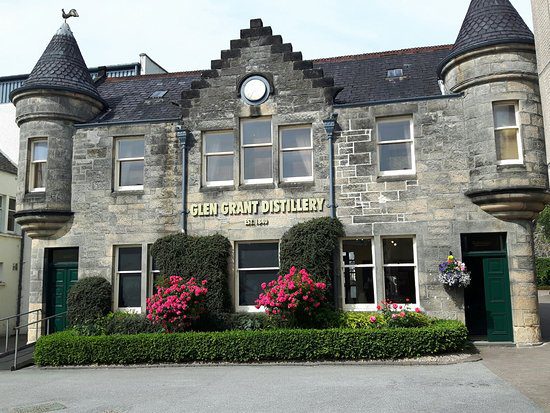History of Glen Grant Distillery
Founded in 1840 by brothers James and John Grant, they built their distillery at Rothes near the town of Elgin in Speyside. The Grant brothers were ferocious modernisers, making new technologies work for them. They were strong proponents of the Northern Railroad, personally paying for the line to be connected from Elgin to Rothes. One of the engines running on this line from Lossiemouth and back would be named Glen Grant in recognition of their contribution. Later, in 1861, Glen Grant was the first distillery to install electric lighting.
James Grant Jr would later build a second subsidiary distillery across the road from the original Glen Grant to supply additional spirits. It first ran for six years from 1897 to 1902 before being mothballed. It would later reopen again un 1965 under the name Caperdonich. However, it shut down again in 2002 and was later demolished completely.
The Grants remained the sole owners of the distillery until 1953. That was when Douglas Mackessack, great grandson of James Grant, formed a partnership with George and J. G. Smith, creating Glenlivet & Glen Grant Distillers Ltd.
Seagrams bought the distillery in 1972, and when it was itself divided between Diageo and Pernod Ricard in 2001, Glen Grant went with the French company. Five years after that Campari bought it for €115 million. By this time Glen Grant’s place in world sales rankings was slipping precipitously. Campari decided to arrest this by shifting focus to older single malt whiskies, and relaunched the entire range in 2007.
Glen Grant is equipped with a 12.3 ton capacity mash tun and ten washbacks of Oregon Pine. The number of stills peaked at ten in 1977, but under Campari there are currently eight stills operating. The stills are notable for the shape of the bulbs, which are almost square, and the purifying chambers they have on the lyne arm to help make a lighter spirit.
The core range of single malts from Glen Grant consists of the Major’s Reserve, the most easy drinking malt in their range, as well as a 10 year old, a 12 year old, and the 18 year old. The 12 year old starts highly fruity on the nose with lots of citrus and pears. The sweetness is richer in the mouth, with notes of vanilla and caramel, followed by a light spice and more fruit in the finish.
A good mix of Limited Editions have also been released such as the Sherry aged 50 year old which came out in 2014. The Five Decades expression was released in 2013 to celebrate the contributions of Master Distiller Dennis Malcolm to Glen Grant over 50 years. While the 1992 Cellar Reserve, aged in ex-Bourbon and ex-Oloroso Sherry Casks is described as the sweetest of the range.




